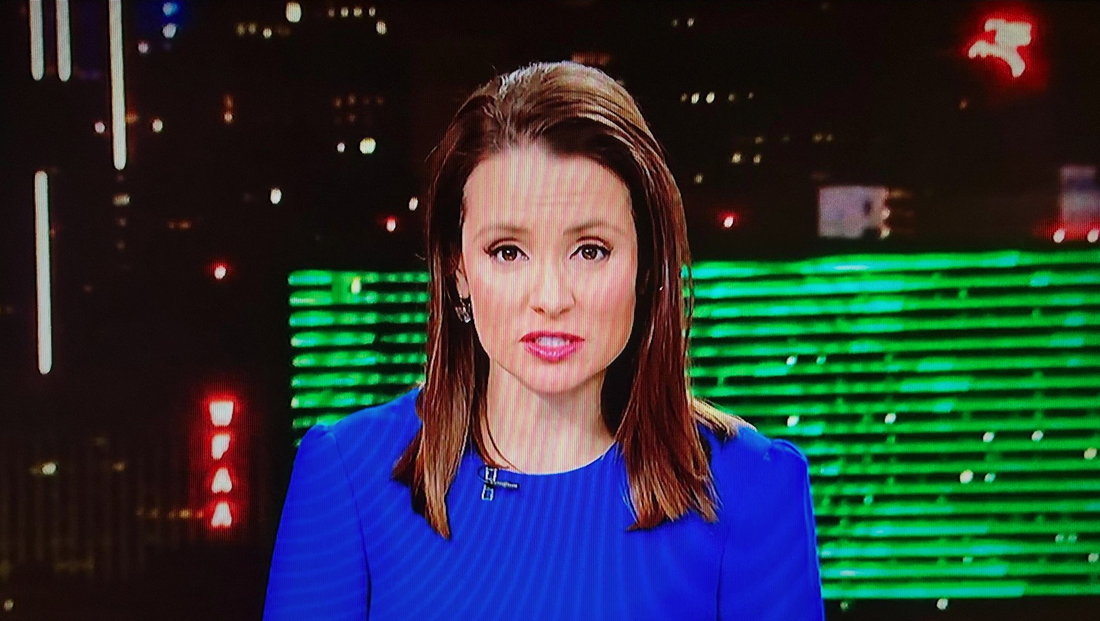Forecaster notices his station’s calls behind a rival’s anchors

Subscribe to NCS for the latest news, project case studies and product announcements in broadcast technology, creative design and engineering delivered to your inbox.
A reporter from a rival station called out KXAS in Dallas over a video wall background on Sunday, Dec. 3, 2023.
During the NBC station’s 10 p.m. newscast, the video wall behind the anchor desk was displaying a view of the Dallas cityscape.
Over anchor Katy Blakey’s shoulder the letters “WFAA” could be seen fairly clearly in a vertical arrangement.
Those red letters are installed on the side of WFAA’s tower near the ABC affiliate’s 606 Young Street studios.
The green horizontal lighting installed on the facade of the Omni Dallas Hotel is also prominently visible.
WFAA forecaster Jesse Hawila took notice of the appearance of his station’s call letters on a competitor’s air.
While the video wall background is obviously meant to showcase the city’s skyline in a realistic manner, it is a bit odd that the station would chose to use a feed that prominently features a competitor’s brand.
In some cases, stations own and operate the cameras that are used to showcase local conditions and feed video wall backgrounds, but in other cases they may be shared with other organizations. Other live cameras can also be positioned in partnership with the building or property it is installed at, sometimes with a co-branding agreement between the owner and station.
It’s not clear who controls the camera KXAS opted to use in this shot or if it could have been repositioned to not include the WFAA letters. During other newscasts since Hawila’s post, a similar view has been used but the WFAA letters aren’t quite as prominent.
Often these types of setups are PTZ models so the station can remotely adjust the framing as needed.
Video wall backgrounds have been “photobombed” by competitors in the past, such as when WMAQ showed off a WBBM truck behind an anchor, but that case would have been less difficult to anticipate.
Live video feeds behind anchors and keyed behind forecasters have been invaded by a variety of wildlife over the years, including bugs and birds, who often end up appearing larger than life since they end up landing close to the camera lens.
Subscribe to NCS for the latest news, project case studies and product announcements in broadcast technology, creative design and engineering delivered to your inbox.



tags
dallas, KXAS, Video Walls, wfaa
categories
Broadcast Industry News, Featured, Local News